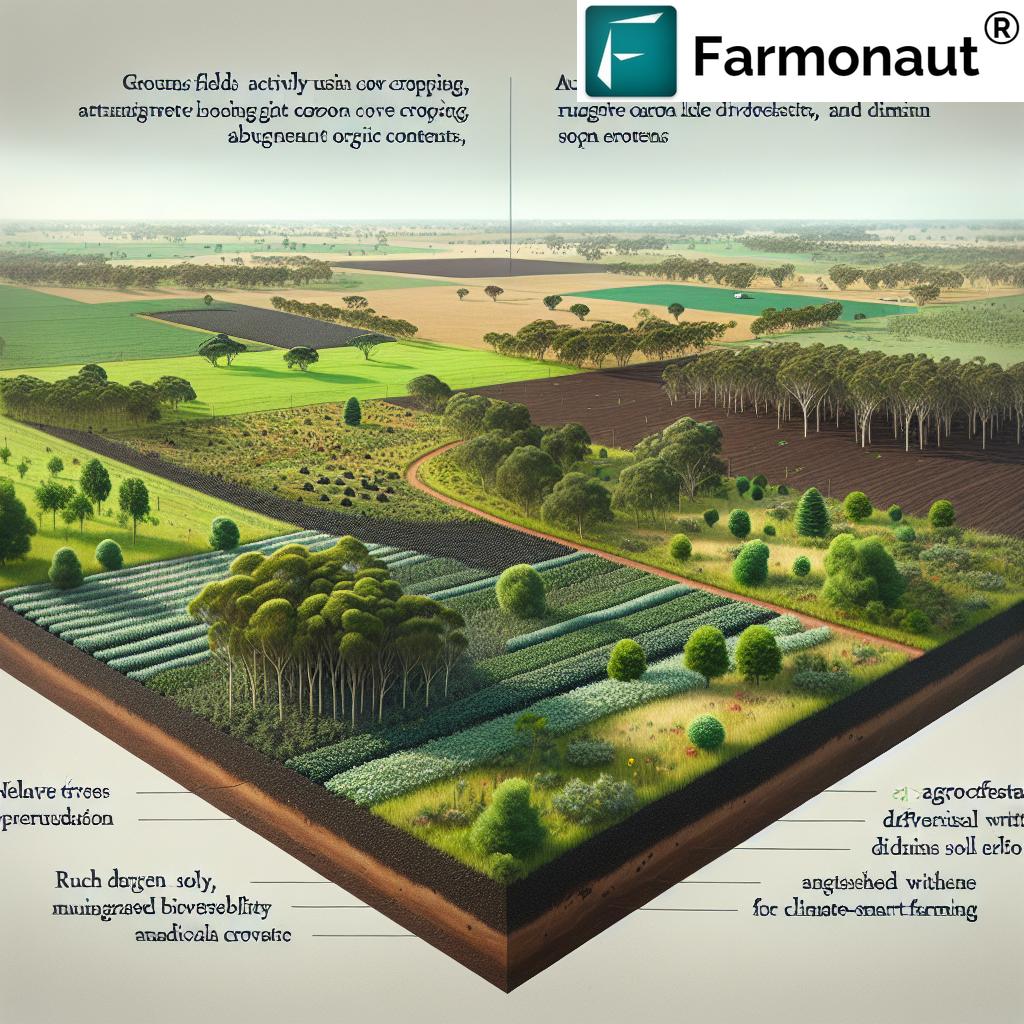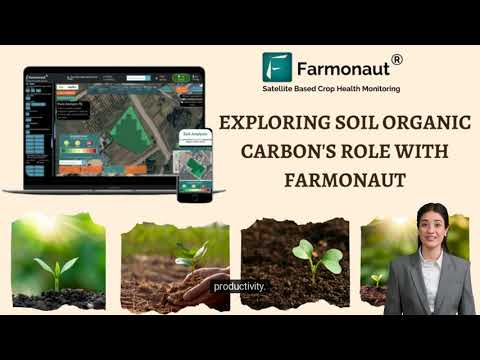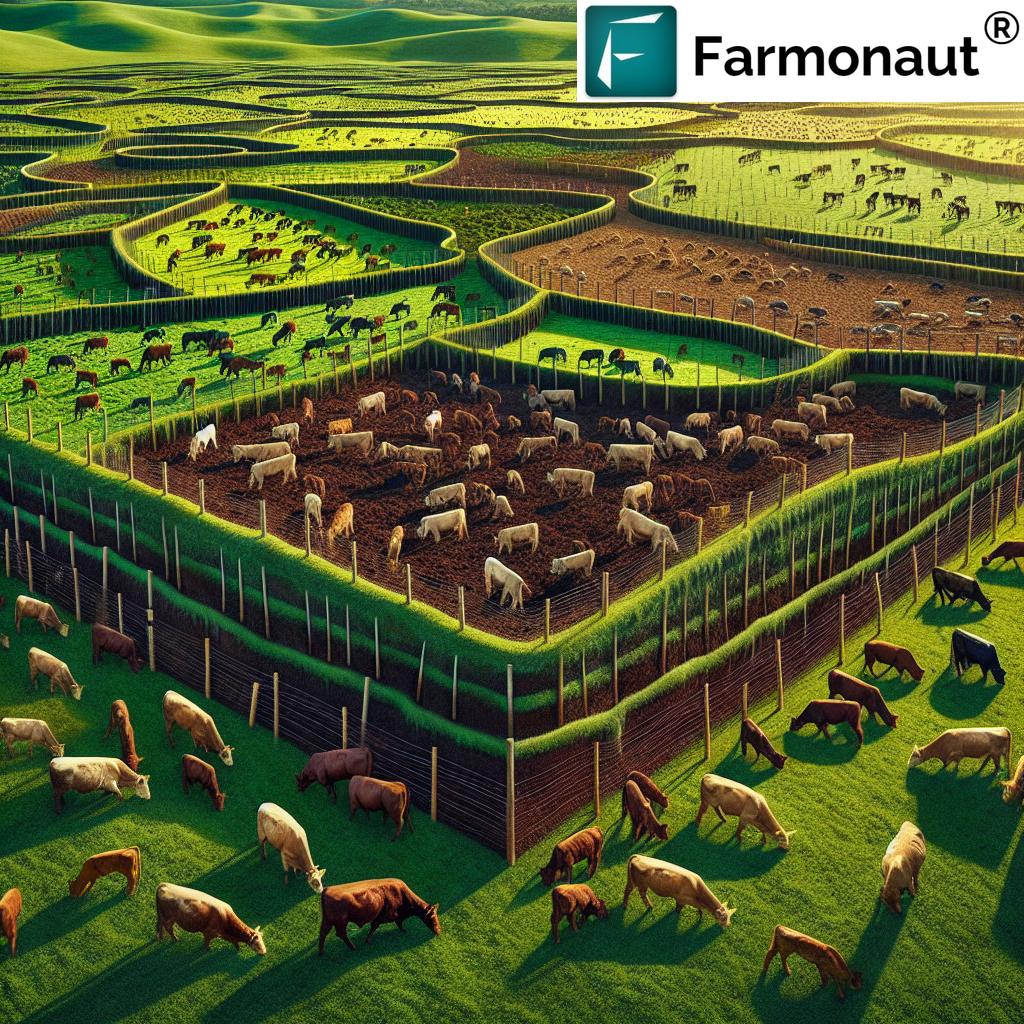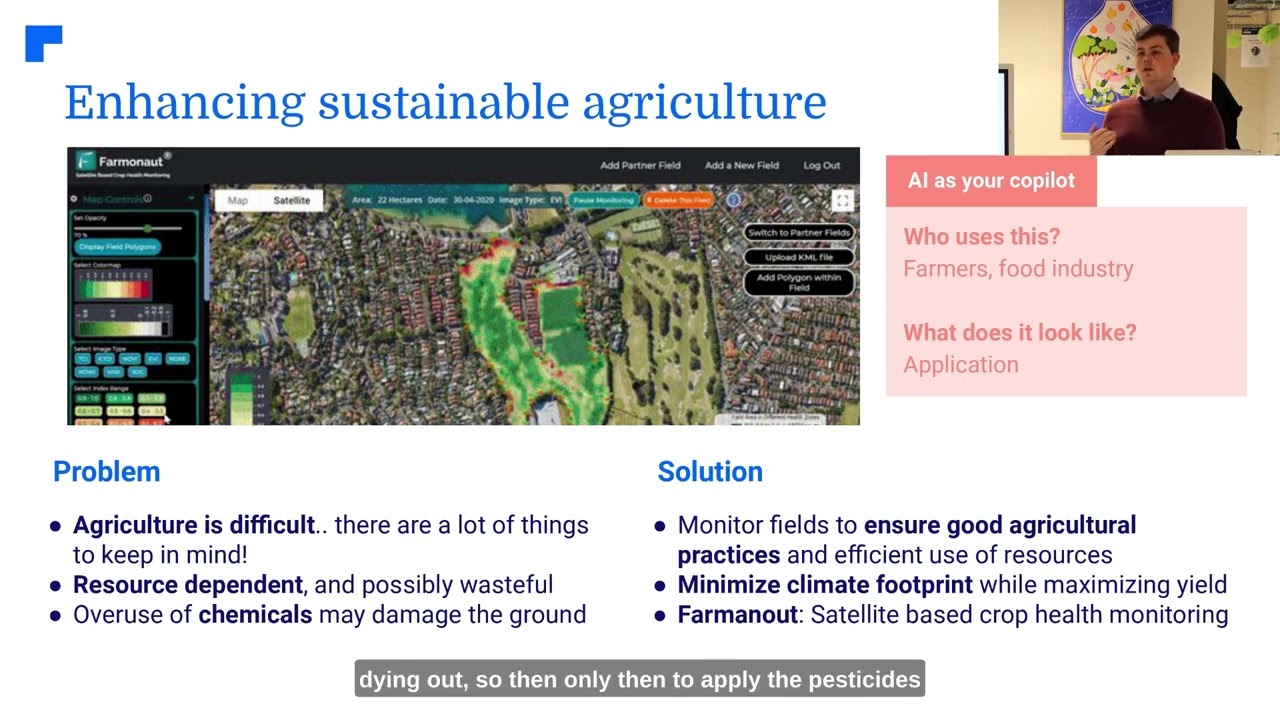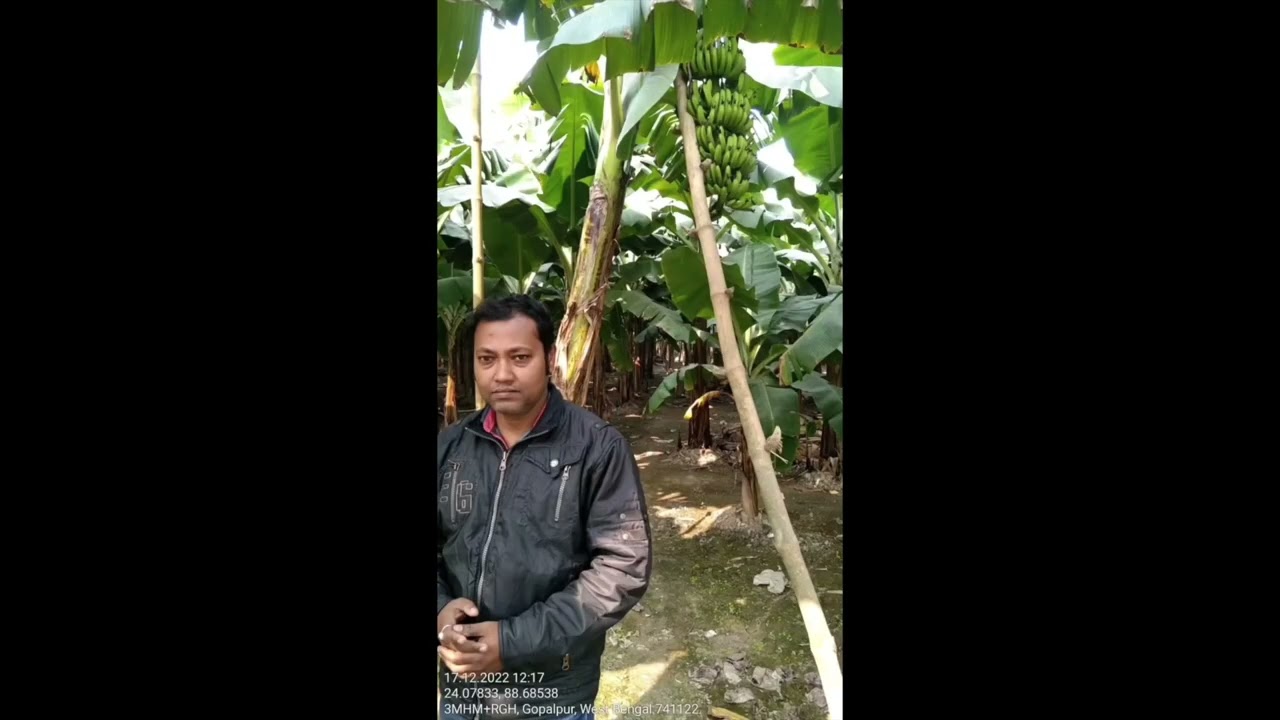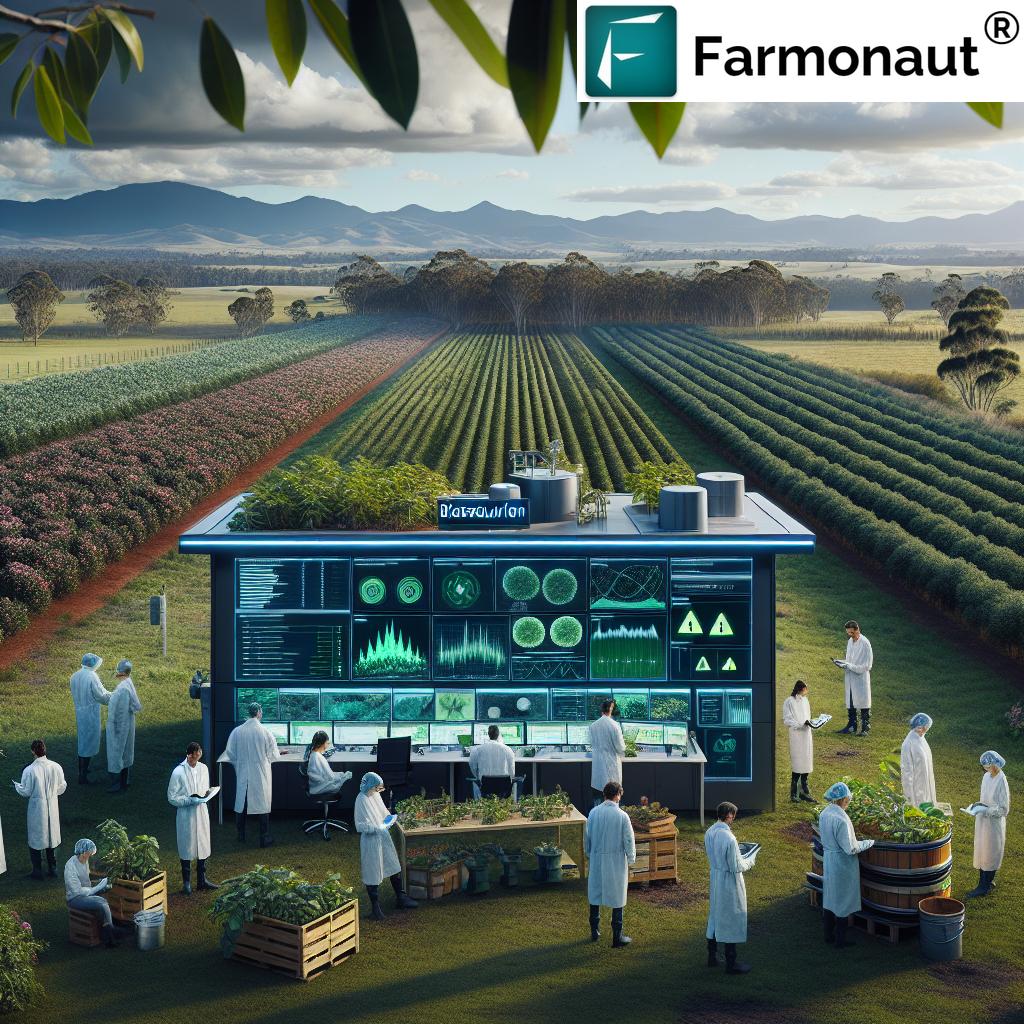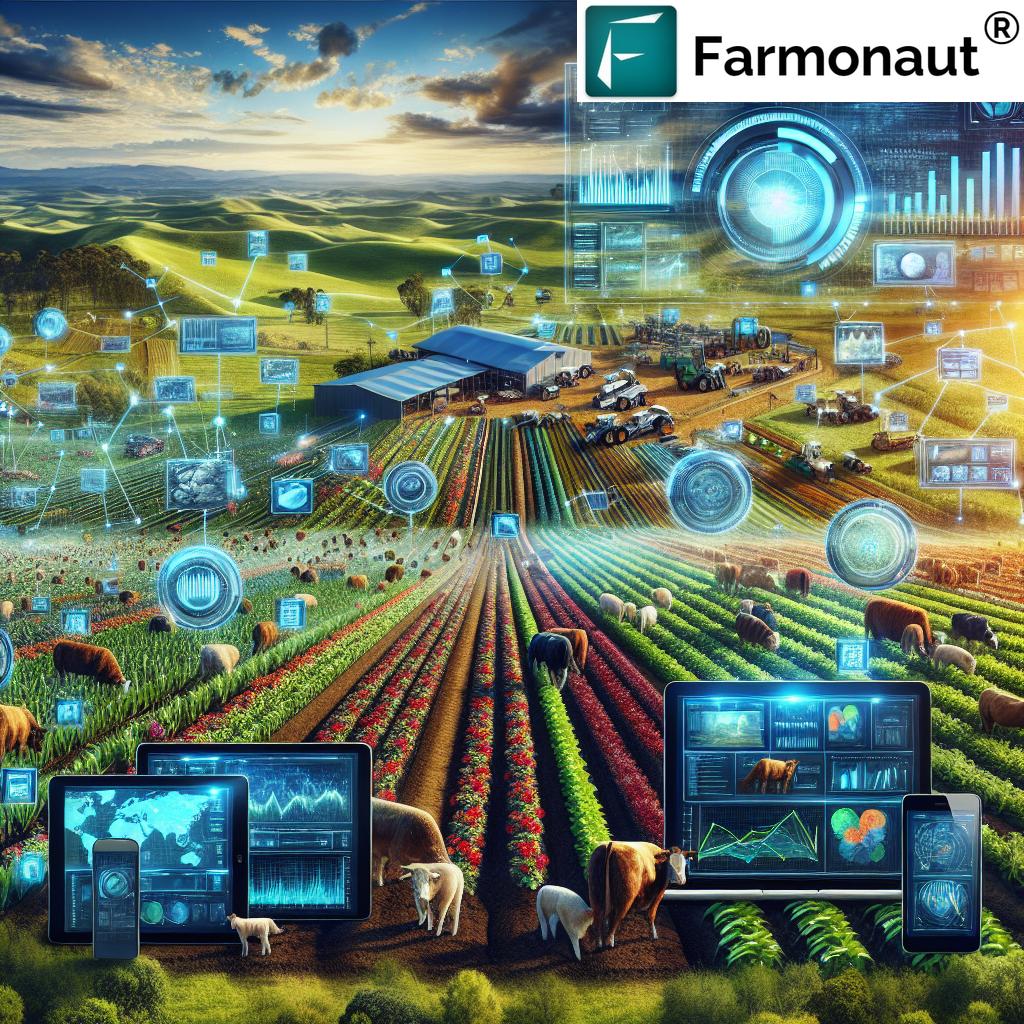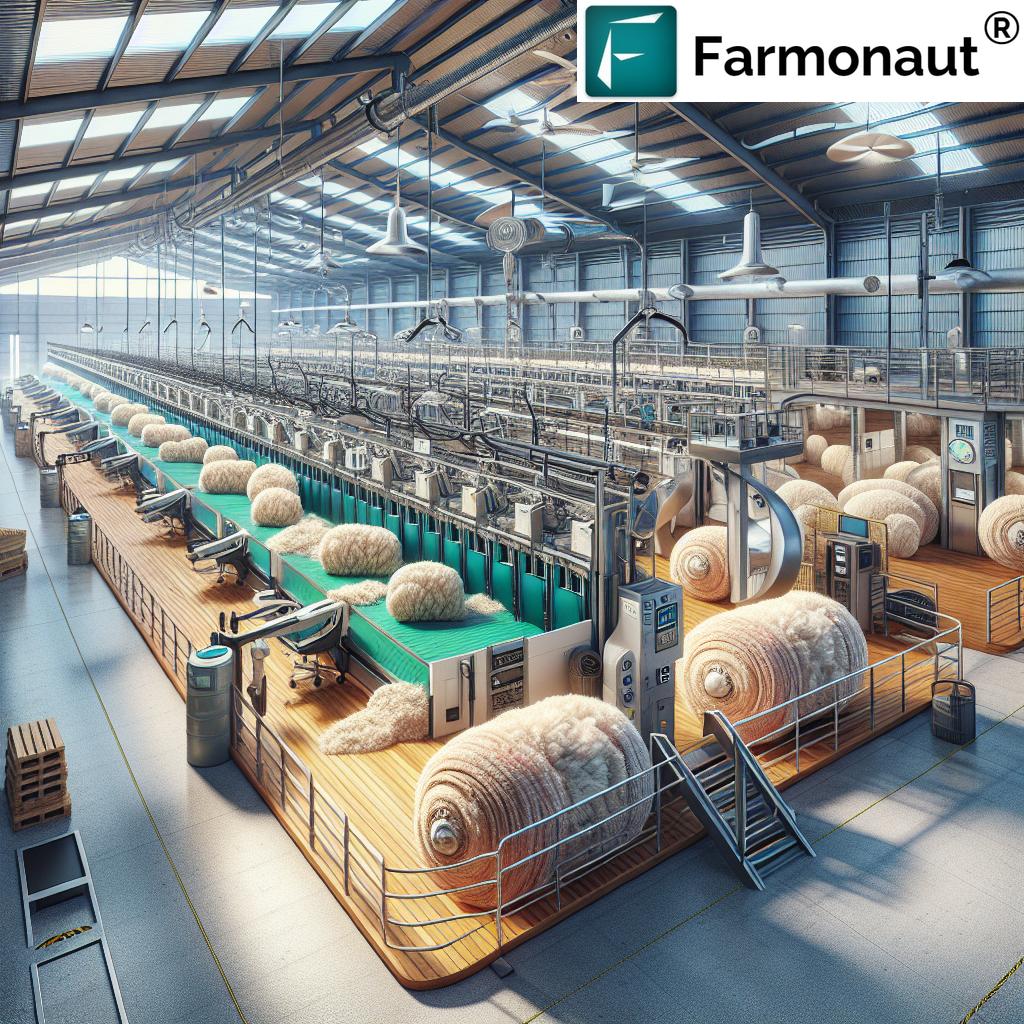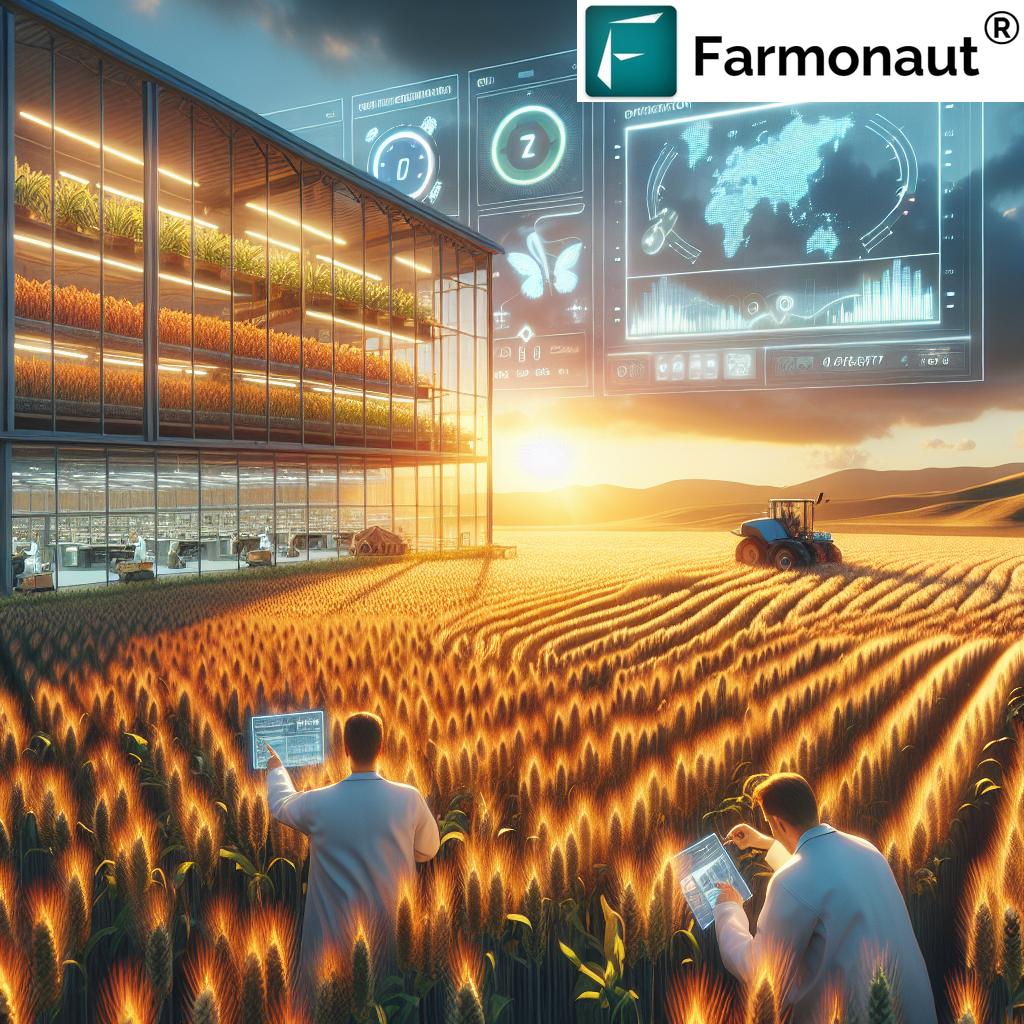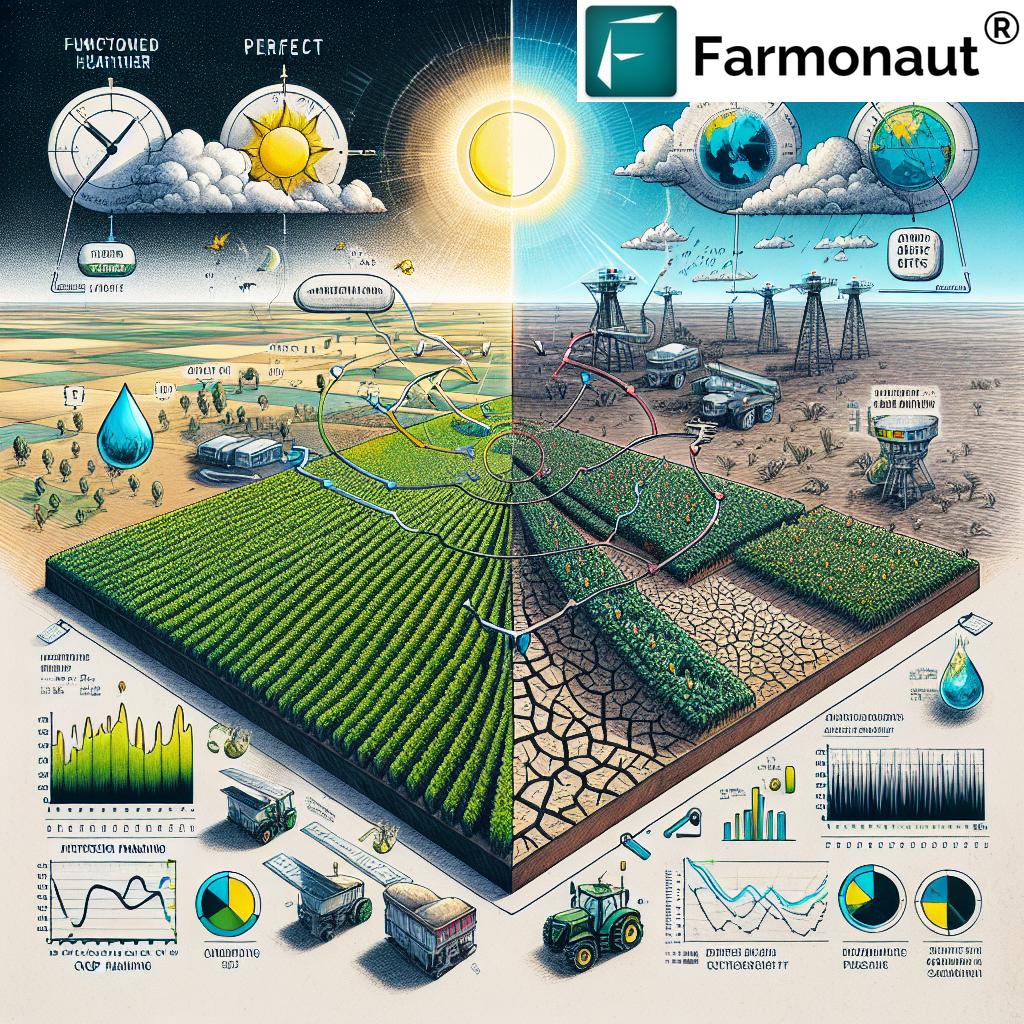Carbon Farmer Secrets: 7 Game-Changers for Australia
“Australian carbon farmers can sequester up to 1.1 billion tonnes of CO₂ by 2050 through climate-smart practices.”
Introduction: Australia’s Carbon Farming Revolution
As Australia faces the urgent need to curb carbon emissions and adapt to changing climate challenges, carbon farming practices have become a cornerstone of our national drive toward climate-smart agriculture. At its core, this approach unites tried-and-tested methods with innovative technologies to capture, store, and sequester atmospheric CO₂ in soil and vegetation. Through carbon sequestration, we not only mitigate climate change but also benefit our soils, increase biodiversity, and open lucrative income streams via carbon credits for farmers.
Let’s uncover the 7 game-changing secrets powering carbon farming in Australia—practical steps to ensure a more resilient, productive, and sustainable future for our landowners, agribusinesses, and the nation as a whole.
What is Carbon Farming?
Carbon farming is a suite of practices and systems in agriculture and forestry that capture—or sequester—atmospheric carbon dioxide (CO₂) in soil, organic matter, and vegetation. When we implement these agricultural practices effectively, we not only reduce CO₂ levels from the atmosphere but also:
- Boost soil health and structure
- Prevent erosion and restore degraded land
- Improve yields for farmers
- Provide carbon credits as new income opportunities
- Increase biodiversity and natural resilience to droughts, flooding, and climate variability
This climate-smart approach is rapidly taking hold in Australia, supported by innovative monitoring technologies, favorable government incentives, and a burgeoning carbon market that rewards growers for good stewardship.
7 Carbon Farmer Game-Changers for Australia
Many carbon farming practices are well-proven, while others represent bold new territory for Australian agriculture. Here’s our expert breakdown of the seven most transformative—and climate-resilient—approaches for soil carbon sequestration and sustainable agriculture:
1. Agroforestry Systems: Integrating Trees & Shrubs for Carbon Storage
Agroforestry systems involve integrating trees and shrubs directly into our agricultural lands. This carbon farming practice results in higher carbon storage both above ground in biomass and below ground in soil organic matter. Agroforestry does more than just capture and store CO₂; it also:
- Prevents soil erosion by sheltering crops and restores degraded land
- Promotes biodiversity by providing habitats for beneficial insects and birds
- Improves soil fertility through leaf litter, root networks, and faster nutrient cycling
- Increases drought resilience due to better water retention and shade
By integrating woody species—such as wattles, eucalypts, or bushfood natives—with annual crops, we enhance carbon sequestration rates and secure extra income streams from timber, fruits, or nuts.
Learn more on the benefits of agroforestry and carbon farming.
To accurately monitor vegetation health, soil carbon trends, and tree growth in agroforestry systems, Farmonaut’s satellite-based solutions offer real-time insights for maximized productivity and sustainability. Our Agro-Admin App enables large landholders and agribusinesses to manage, assess, and report on tree cover, soil carbon sequestration, and overall ecosystem health intuitively and affordably.
2. No-Till and Reduced Tillage: Preserving Soil, Increasing Soil Carbon
No-till farming and reduced tillage are foundational carbon sequestration methods. By minimizing soil disturbance, we preserve vital soil structure, reduce erosion, and support a thriving organic matter ecosystem. Main advantages include:
- Enhanced soil carbon storage via deeper root growth and less oxidation
- Reduced erosion and better moisture retention—essential in drought-prone Australian landscapes
- Lower energy and fuel costs during field preparation
- Improvement in microbial life crucial to soil health
- Less CO₂ released into the atmosphere compared to conventional tillage
Several studies confirm that long-term adoption of no-till systems increases soil organic carbon, but results depend on climate, soil type, and cropping rotation. Our approach should be regionally tailored for maximum benefit.
Discover more about No-Till Farming & Carbon Sequestration.
3. Cover Cropping Benefits: Living Roots for Carbon Capture
Cover cropping is the practice of planting specific crops (such as clover, vetch, or ryegrass) during off-seasons or between cash crops to protect soil, prevent erosion, and capture atmospheric CO₂. Cover crops play a crucial role in the soil carbon cycle by:
- Enriching soils with fresh organic matter as they decompose
- Fixing nitrogen (especially legumes) and reducing fertilizer demand
- Protecting topsoil from wind, rain, and drought
- Increasing soil organic carbon through continuous living roots
- Promoting greater biodiversity and resilience to pests
Proper integration of cover crops restores soil structure, optimizes water infiltration, and enhances microbial activity—a triple win for climate-smart agriculture in Australia.
Explore how cover cropping boosts soil carbon sequestration
We can track soil moisture, cover crop establishment, and crop health across entire paddocks using Farmonaut’s satellite AI systems. This allows for better timing, management, and reporting for carbon credit verification and government incentives.
“Over 200 Australian projects have earned carbon credits by adopting soil health-boosting carbon farming methods.”
4. Rotational Grazing for Carbon Sequestration: Grasslands as Carbon Sinks
Rotational grazing is the systematic movement of livestock between pastures to allow grasslands to recover and promote healthy growth. This practice directly contributes to:
- Greater soil organic matter as plant roots & manure enhance carbon content
- Reduced overgrazing and erosion risks
- Improved biodiversity by enabling a mosaic of plant and animal species
- Sequesters carbon in dense root systems and undisturbed soils
- Supports soil structure and fertility, making grasslands a net CO₂ sink
Rotational grazing for carbon sequestration is rapidly gaining traction in southern and western Australia, providing operational flexibility for graziers and tangible climate mitigation outcomes.
Why rotational grazing is key to climate-smart agriculture
Through clear, remote monitoring of pasture condition and livestock rotation, Farmonaut’s fleet management and satellite tools assist graziers in verifying carbon sequestration—critical for claiming carbon credits and compliance.
Explore Farmonaut’s Fleet Management capabilities for tracking pastures, paddock rotation, and operational logistics on mixed production farms.
5. Biochar Application in Agriculture: Locking Carbon Away for Centuries
Biochar is a stable, charcoal-like substance produced by heating organic matter—wood, crop stubble, manures—under low-oxygen conditions. When applied to soils, biochar:
- Locks carbon into the soil for hundreds to thousands of years
- Improves soil structure and nutrient retention for crops
- Reduces the need for chemical fertilizers and irrigation water
- Promotes biodiversity in soil fauna and flora
- Boosts soil resilience against droughts while lowering nitrous oxide emissions
Biochar application in agriculture is considered one of the most robust and permanent forms of carbon sequestration available to Australian farmers.
More on biochar and its benefits for climate mitigation
Using Farmonaut’s carbon footprinting services, landholders can estimate real-time emissions reduction and improvement in soil organic carbon following biochar amendment, making it vital for carbon credits verification and government reporting.
6. Perennial Crop Cultivation: Long-Lived Roots for Lasting Carbon
Perennial crop cultivation means planting crops (e.g., lucerne, native grasses, certain oilseeds, nuts) that establish long-lived, extensive root systems without annual replanting or tilling. These crops:
- Store large amounts of carbon in roots, stubble, and soil over time
- Reduce soil disturbance and prevent erosion
- Increase drought resilience and yield stability
- Support multifaceted income streams for farmers
- Encourage biodiversity by creating wildlife corridors and habitat diversity
In Australia’s variable and sometimes arid climate, shifting to perennial-based systems is a strategic carbon farming practice that rewards with higher soil carbon sequestration and resilient farming landscapes.
The science behind perennial crops and soil carbon improvement
7. Advanced Technologies: Data-Driven Climate-Smart Agriculture
The future of carbon farming in Australia heavily relies on precision agriculture tools and data-driven insights. Modern systems like Farmonaut deliver breakthroughs in:
- Satellite crop health monitoring: Provides landscape-level analysis of soil health, vegetation cover, and crop biomass for timely and targeted interventions.
- AI-based advisory and reporting: Makes it easier to adopt carbon farming practices, track compliance, and improve yields—especially valuable for small and medium farms.
- Blockchain traceability: Offers end-to-end transparency of produce origin, input histories, and carbon activity, supporting carbon credit and ecolabels credibility.
- Fleet & resource management: Optimizes movement of machinery and inputs—reducing costs and carbon emissions.
- Carbon footprinting: Allows direct measurement, tracking, and reporting of carbon sequestration, emissions, and compliance with carbon footprinting tools.
By integrating these technologies, Australian farmers, landowners, and companies can accelerate the adoption of climate-smart agriculture and maximize economic, environmental, and societal returns.
Learn more about how Farmonaut’s blockchain-based product traceability supports sustainability and transparency for climate-forward agribusiness.
Major Benefits of Carbon Farming Practices
Adopting carbon farming is about much more than just storing carbon. Let’s break down the many ways Australian farmers, agribusinesses, and the wider community benefit:
-
Climate Change Mitigation:
By actively sequestering carbon from the atmosphere, we help limit global warming and contribute to Australia’s emissions reduction goals.
Discover how carbon sequestration practices advance climate-smart agriculture.
-
Enhanced Soil Health:
Methods like cover cropping, biochar application, and no-till increase soil organic matter, boost fertility, and improve water retention.
Bonus: Healthier soils mean greater yields and reduced reliance on chemical inputs. -
Biodiversity Boost:
Promoting native grasses, shelterbelts, and mixed swards results in higher plant and animal diversity, which supports crop pollination, natural pest management, and landscape resilience. -
Economic Opportunities:
The rise of carbon markets means farmers can earn carbon credits for every tonne of CO₂ they sequester—selling these to companies and government schemes seeking to offset emissions. In Australia, the Emissions Reduction Fund (ERF) is a leading example. -
Adaptation & Resilience:
Improved soil structure and greater shade/vegetation coverage reduces risk from droughts and floods—essential as we head toward more variable climatic conditions in Australia. -
Improved Marketability:
Carbon-friendly practices can deliver ecolabelling and marketing advantages, especially for food, fibre, or forestry products destined for export markets or climate-conscious consumers.
The cumulative effect? A robust, climate-smart agricultural sector that not only benefits today’s farmers and landholders but also protects Australia’s food and environmental security for generations to come.
Comparison Table: Carbon Farming Practices & Benefits for Australia
| Practice Name | Est. Carbon Sequestration (tCO₂/ha/year) | Soil Health Improvement | Potential Income from Carbon Credits (AUD/ha/year) | Additional Sustainability Benefits |
|---|---|---|---|---|
| Agroforestry Systems | 5–10 | Significant: Restores structure & organic matter | $100–$400 | Enhanced biodiversity, erosion control, new income streams (timber/fruits) |
| No-Till & Reduced Tillage | 0.3–1.5 | Moderate: Less disturbance, improved moisture | $20–$130 | Lower input/energy costs, improved drought resilience |
| Cover Cropping | 0.5–1.8 | High: Adds organic matter, boosts microbes | $25–$155 | Nitrogen fixation, erosion protection, plant diversity |
| Rotational Grazing | 0.6–3.0 | High: Higher organic matter, healthier soils | $15–$175 | Increased pasture persistence, reduced degradation |
| Biochar Application | 4–8 | Very high: Permanent C storage, nutrient boost | $50–$300 | Long-term carbon storage, better water retention |
| Perennial Crop Cultivation | 1.0–2.5 | Strong: Deep roots, organic matter improvement | $30–$170 | Yield stability, wildlife habitat improvement |
*Estimates are indicative only; actual values vary by region, soil, and implementation method. Learn about carbon measurement and verification with Farmonaut’s Carbon Footprinting tools.
Barriers & Challenges in Adopting Carbon Farming
While the benefits of carbon farming practices are substantial, there are several challenges that can slow down widespread adoption across Australia:
-
Measurement & Verification:
Accurate and cost-effective measurement of soil carbon sequestration is crucial for carbon credits for farmers, but traditional field sampling and lab analyses can be expensive. -
Financial Barriers:
High upfront costs for equipment, new seed, or transition—plus uncertainty of immediate returns—can be a hurdle, especially for smaller or family operations. -
Lack of Standardization:
Absence of clear, standardized guidelines across measurement, reporting, and verification (MRV) systems leads to market and compliance uncertainty. -
Long-Term Commitment:
Some practices may reduce yields in the short term or require sustained maintenance and recordkeeping. -
Knowledge Gaps:
Many farmers lack access to independent, region-specific information and affordable advisory support to select optimal practices.
More on overcoming financial and technical barriers in carbon farming.
To address measurement and verification, Farmonaut’s satellite-AI platform offers cost-effective, large-scale, and data-driven carbon tracking, reducing compliance costs and broadening access for all Australian farmers and landowners.
Policies & Incentives for Carbon Farming in Australia
Government policies, incentives, and carbon markets are integral to mainstreaming carbon farming in Australia. Key developments include:
-
Emissions Reduction Fund (ERF):
Australia’s flagship scheme that provides financial incentives for farmers adopting carbon-friendly practices. Farmers and landholders can earn Australian Carbon Credit Units (ACCUs) for proven sequestration activities and sell these to companies seeking emissions offsets. -
Grants & Support:
Various Commonwealth and State programs offer grants for land restoration, carbon measurement, or innovations in climate-smart agriculture. -
International Recognition:
Australian carbon farming projects are increasingly recognized by global brands, investors, and supply chains, driving demand for rigorous MRV and technology-based verification. -
Continued Research & Extension:
Support for education, demonstration, and tech transfer (like remote sensing and blockchain for verification).
Read more about carbon farming policies and income opportunities in Australia.
How Farmonaut Empowers Australian Farmers
As the complexity of climate-smart farming grows, digital solutions are essential for scaling carbon farming practices and making them accessible across all farm sizes. Farmonaut stands out by offering:
-
Satellite-Based Crop Monitoring:
Real-time, multispectral analysis enables farmers to measure changes in vegetation health, soil moisture, and biomass—vital for quantifying and reporting carbon sequestration. -
AI-Powered Farm Advisory:
Our Jeevn AI system provides customized recommendations for optimizing cover cropping benefits, carbon-friendly rotations, and no-till practices. -
Blockchain Traceability:
Product traceability solutions help agribusinesses and corporate clients provide transparent, tamper-proof records of input use, carbon activities, and supply chain milestones. -
Fleet & Resource Management:
Landowners benefit from robust fleet tracking tools that minimize emissions from machinery and optimize resource allocation. -
Carbon Footprinting:
Our carbon footprinting platform enables farmers, agribusiness, and supply chains to track, manage, and report carbon emissions and sequestration for income, ecolabels, and finance. -
API & App Integrations:
Developers and larger IT teams can unlock our Farmonaut API and developer documentation for custom integrations or research projects. -
Democratized Access:
Our subscription plans are scalable and cost-effective, supporting everyone from smallholder farmers to large agribusinesses aiming to lead in sustainability.
Get started with Farmonaut—and see why precision agriculture is now accessible for all in the climate era.
FAQs: Carbon Farming in Australia
-
What is carbon farming?
Carbon farming includes agricultural and forestry practices that capture and store atmospheric carbon dioxide (CO₂) in soils, crops, and trees—mitigating climate change, improving soils, and offering income opportunities via carbon credits in Australia. -
How do farmers earn carbon credits?
Australian farmers can earn carbon credits by implementing registered carbon sequestration practices (like cover cropping, agroforestry, or no-till) and verifying their results through accepted MRV (measurement, reporting, and verification) methods. -
What are the main barriers to carbon farming?
The main barriers are high measurement/analysis costs, uncertain income, lack of technical knowledge, and inconsistent guidelines for tracking and verification. -
Is carbon farming suitable for small and large farms?
Yes! With digital platforms like Farmonaut and tailored policies, carbon farming is increasingly accessible to both smallholder and large-scale operations. -
What technologies help with carbon farming?
Satellite monitoring, AI-driven tools, blockchain traceability, and real-time advisory systems make it easier to adopt, monitor, and profit from carbon-friendly practices in Australia. -
Does Farmonaut offer carbon credit trading?
Farmonaut provides the tools for measurement, monitoring, and verification of carbon sequestration, but does not broker or trade carbon credits directly. -
How do I get started?
Begin by downloading the Farmonaut App (web or mobile) or exploring our carbon footprinting tools and guided advisory services.
Conclusion: Building a Carbon-Positive Future in Australia’s Agriculture
Carbon farming is shaping up as one of the most impactful strategies for us to reach our global climate goals while enhancing soil health, supporting farmers, and creating new economic opportunities across Australia.
- By integrating trees and shrubs through agroforestry systems,
- Minimizing soil disturbance with no-till farming,
- Expanding cover cropping and perennial crop cultivation,
- Practicing rotational grazing, and
- Applying biochar—
—we can dramatically increase our land’s ability to capture and store carbon, mitigate atmospheric CO₂ levels, and build landscapes that thrive under a changing climate.
Digital platforms like Farmonaut make it possible for every Australian landholder and agribusiness to participate, monitor, and prove their contribution toward a more sustainable world—while unlocking new sources of value.
The next chapter in Australian agriculture is climate-smart, carbon-positive, and digitally empowered. Are you ready to join us?


